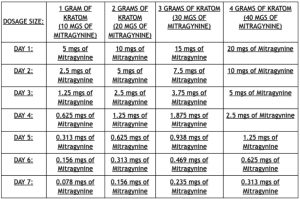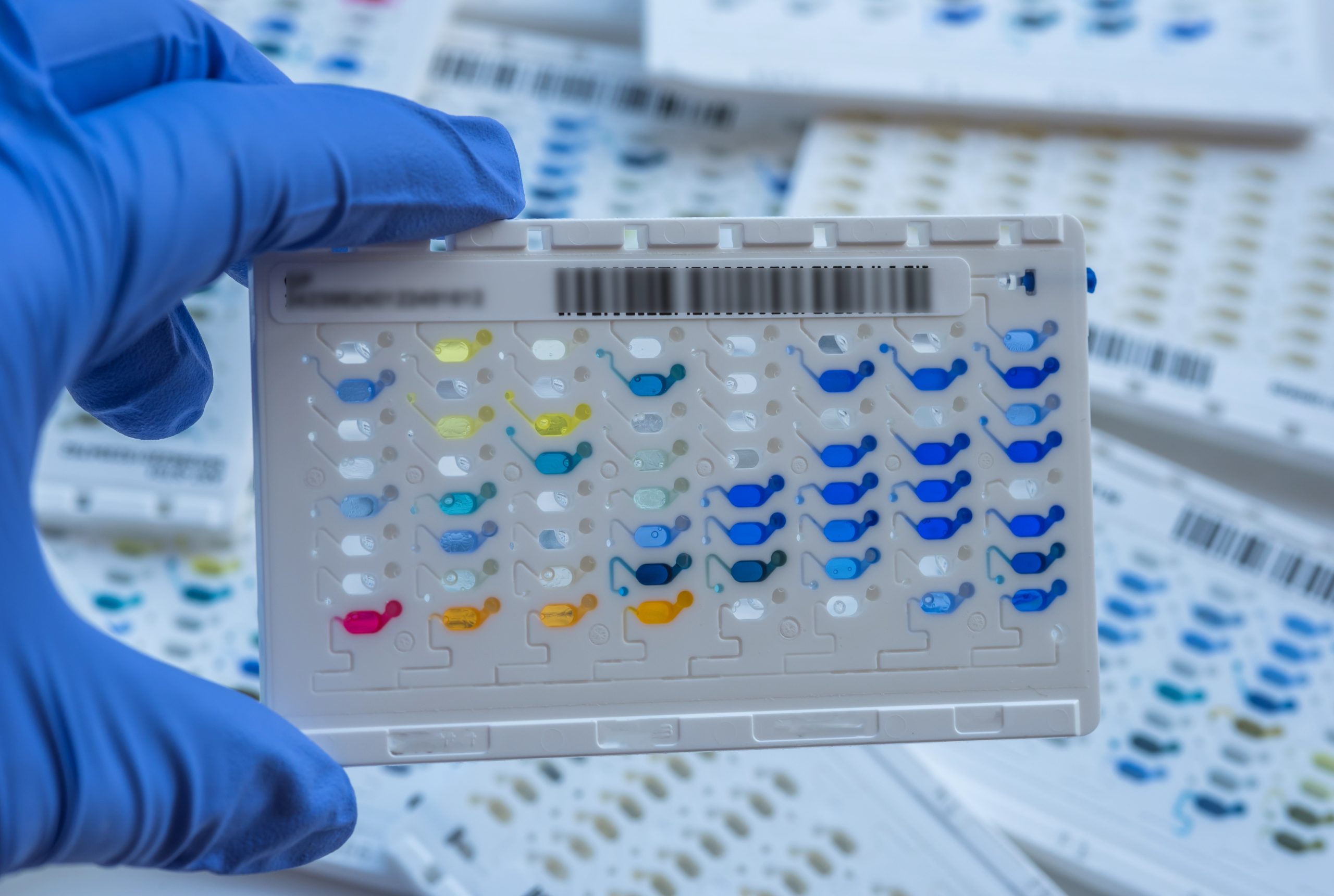Whenever you take an herbal supplement, you don’t consider the risk that it will show up on a drug screen. But it is possible. Toxicology reports can register for any active compound.
It’s an expensive venture, though. Without any demand for such a product, it’s a waste of capital.
One botanical product has changed that narrative in the US in recent years. The plant Mitragyna speciosa, more commonly known as Kratom, has created a small demand for Kratom drug tests. But it’s not the norm.
The odds of receiving a drug test for Kratom are slim to none, but those odds increase in areas with a ban on Kratom.
Still, places with Kratom bans won’t usually test for it. However, it is possible. So stay within the confines of the law in your community.
In this article, we’re going to provide you with everything you need to know about Kratom drug tests. Before we get too far ahead of ourselves, we should cover some general information about standard drug tests. Then we can break down how a Kratom toxicology screening functions.
What Types of Drug Tests Are Out There?
When you take a substance that produces psychotropic reactions in the brain, the duration of those effects depends on the concentration of chemical compounds found in the bloodstream. That time varies from one drug to the next.
Alternative methods for drug testing have separate timeframes, too. For example, the metabolites of drugs only stay in our blood for a few hours. Meanwhile, we can detect active compounds in hair follicles several months later. Let’s look at the various ways to perform drugs tests.
- Urinary Toxicology Screen: The most common form of drug testing gets conducted through a urinary analysis. Substances are usually detectable for up to a month.
- Blood Toxicology Screen: Doctors can perform a blood test during medical emergency services. A positive reading is only possible for a few hours using this method.
- Hair Toxicology Screen: A drug test that uses hair follicles provides the most prolonged window for detection. Metabolites are measurable for several months—possibly a year.
- Sweat Toxicology Screen: Sweat patch drug tests are relatively new. The patch stays on the subject for a couple of weeks, allowing an ongoing analysis to commence through the same period. Removing or tampering with the patch is detectable. So it eliminates cheating.
- Saliva Toxicology Screen: Oral swabs are becoming more common. The test can determine drug use for up to two days.
What Are Multi-Panel Drug Tests?
Employers and probation/parole departments commonly perform drug tests through a urinary analysis. In most cases, it produces immediate results. The tests are cost-effective, too.
Generally, the purchaser can choose between several substances tested. The drug screens only seek out specific metabolites authorized by the consumer.
These tests are—for the most part—very accurate. According to research, the detection of selected metabolites was in the high-90 percentage of accuracy for four on-site drug kits.
Multi-panel drug tests have strips (or indicators) on the inner portion of the cup. It indicates if drugs are present in the urine. The number of detectable substances varies. Multi-panel drug kits typically determine the presence of four to twelve separate substances, but some tests can detect over 20 different drugs.
Standardized versions of these products are available for the public, too. Anyone who wants to know whether a substance remains in their system can use them before performing an employment screening. That can reduce anxiety for people who smoke marijuana in a cannabis-friendly state. As we all know, most employers still look at weed as a federally illegal substance.
Laboratories provide exams for whichever drug needs to be tested. Manufacturers sell standard drug tests on the open market, which are available as five, seven, ten, and twelve-panel selections.
The Standard 5-Panel Drug Test
The standard 5-panel drug test is the most common urinary analysis performed on subjects. Private employers, government agencies, and judicial offices routinely use these tests to determine if someone has the five most common illicit substances in their system. Here’s a list of the substances tested using a 5-panel kit.
- Marijuana
- Opiates
- PCP
- Cocaine
- Amphetamines
The opiate portion of the test only registers for the most basic opiates on the street: heroin, morphine, and codeine. Other tests are designed to look for newer versions of opioids commonly used by addicts.
The Standard 7-Panel Drug Test
Employees that operate heavy machinery have routine toxicology screenings for illicit substances using the standard 7-panel drug tests. It registers for additional metabolites that act as depressants in the central nervous system. They can affect a subject’s reaction time in emergencies. This standard test looks for any of the substances below.
- Marijuana
- Cocaine
- Opiates
- PCP
- Amphetamines
- Benzodiazepines
- Barbiturates
A standard 7-panel picks up all the substances from the 5-panel test, but it includes two more drugs—benzodiazepines and barbiturates. Both of those drugs treat anxiety and insomnia, but they have addictive properties. Nowadays, lots of people abuse them.
The Standard 10-Panel Drug Test
Sometimes, an employer or agency wants to look for additional illicit substances. In that case, they can use a standard 10-panel drug test. It provides a more thorough detection of additional opioids.
- Cocaine
- Marijuana
- PCP
- Amphetamines
- Opiates
- Benzodiazepines
- Barbiturates
- Methadone
- Propoxyphene
- Methaqualone (Quaaludes)
The standard 10-panel can detect all the substances from the 7-panel test, but it includes a few more—methadone, propoxyphene, and methaqualone.
Methadone is a synthetic opioid used to treat opioid addiction. Propoxyphene is another opioid it detects.
Methaqualone was a prescription sedative discontinued in the 1980s for its addictive nature, but street versions of the drug are still available.
The Standard-12 Panel Drug Test
In some cases, employers may want to test for a few more illicit substances. They can utilize a standard 12-panel drug test. It adds another commonly abused opioid to its list. And it includes a popular designer drug. Here are the substances it detects.
- Cocaine
- Marijuana
- PCP
- Amphetamines
- Opiates
- Benzodiazepines
- Barbiturates
- Methadone
- Propoxyphene
- Quaaludes
- Ecstasy / MDMA
- Oxycodone / Percocet
The standard 12-panel detects each substance from a 10-panel test, but it includes two more drugs in its list—oxycodone and MDMA. MDMA, commonly known as ecstasy, is a recreational drug used by rave and club enthusiasts. Oxycodone is the most widely prescribed opioid on the market.
How Do They Test for Kratom?
Theoretically, it’s possible to detect Kratom metabolites through every form of drug test. Blood, saliva, sweat, hair, and urine have residual traces of Kratom compounds in them for some time after your last serving.
Any drug test designed to screen for Kratom metabolites can prove Kratom usage.
Nevertheless, most tests don’t seek out Kratom metabolites because it’s not in demand from consumers. However, there are some Kratom drug tests available for that niche client base, but most of them focus on urinary analysis.
Those tests began through chemical analysis laboratories. Now, you can find them for sale to the public. Amazon carries them on its online marketplace.
Kratom drug tests are standalone kits, though. The only substance they test for is Kratom, making it a more expensive endeavor.
In the hospital, doctors can detect Kratom through toxicology screenings of your blood. But blood tests are more expensive and considered invasive, so it’s not a standard form of testing.
There are no known common forms for testing Kratom in your saliva or sweat. But there are Kratom drugs tests that utilize the nails and hair. This version of testing is not a mainstream occurrence. We’ll talk more about it later.
Does Kratom Show Up on a Drug Test?
Kratom does not show up on any of the standard multi-panel drug tests. Since Kratom alkaloids are not listed under the Controlled Substance Act (CSA) by the Drug Enforcement Administration (DEA), Kratom isn’t considered an illicit substance. Testing for the herbal supplement would waste time and money.
However, there are instances where Kratom has generated a false-positive reading for methadone. The two main kratom alkaloids (mitragynine and 7-hydroxymitragynine) can trigger positive results for methadone’s primary alkaloid: 2-ethylidene-1,5-dimethyl-3,3-diphenylpyrrolidine (EDDP). As we pointed out earlier, both the standard 10-panel and 12-panel drug tests can detect it. Consumers who take Kratom must be careful when undergoing one of those toxicology tests. Registering a false positive for methadone in drug tests carries additional implications for employers. Clinics use methadone to treat opioid addicts. That reading can suggest addiction to harsher street drugs like heroin. All false positives for methadone should be contested immediately.
Now, specialty Kratom drug tests do exist. Some employers and government agencies may choose to use them. We should discuss some of those scenarios right now.
Who Might Require a Kratom Drug Test?
In the United States, kratom is considered a legal substance. So the federal government doesn’t have it on its List of Scheduled Drugs. However, individual states have scheduled lists, too. Right now, six states have made Kratom illegal. If you live in any of the following states, employers may test you for kratom use.
- Alabama
- Arkansas
- Indiana
- Rhode Island
- Vermont
- Wisconsin
Besides those states, your local municipalities may have Kratom ordinances on the books. Make sure you know the laws in your community before taking Kratom. Employers in cities or towns where Kratom is illegal may test for it, too.
Other than employers, probation and parole officers may conduct Kratom tests. People on probation or parole can’t have alcohol or any mind-altering substance in their system. Kratom detection on those tests can lead to incarceration. Do not take the risk under those conditions.
Members of the military cannot take Kratom, either. Even though Kratom is considered a federally legal substance, uniformed service members have additional supplements they cannot consume as servicemen. The Department of Defense (DOD) Prohibited Dietary Supplement Ingredients List places Kratom as a prohibited supplement for the United States Armed Forces.
The United States Armed Forces:
- Air Force
- Army
- Coast Guard
- Marine Corps
- Navy
- Space Force
Kratom Drug Tests Are Possible on Newborns
Pregnant women have additional pains and cramps because of pregnancy. Most doctors are wary of pain relievers, especially narcotics. Some women may turn to Kratom since it’s a natural supplement. However, Kratom is considered an illegal drug in areas with Kratom bans. Now, doctors can detect Kratom in a newborn’s system.
The United States Drug Testing Laboratory (USDTL) created a test that specifically detects the presence of Kratom metabolites in the umbilical cord tissue of a newborn infant.
A few studies have investigated the addictive properties of Kratom and the data suggests Kratom is not very addictive. However, the central nervous system of a baby is dramatically different.
Babies exposed to drugs in the womb can lead to other medical complications like neonatal abstinence syndrome. That causes the newborn to go through withdrawals. In that instance, Child Protective Services may get involved. And those mothers might have a battle with the government on their hands.
Even in states where Kratom is legal, the state might have age restrictions for Kratom use. Some states place the age requirement at 18 or older. Others establish it at a minimum age of 21. Pregnant mothers should abstain from kratom during pregnancy. Breastfeeding mothers shouldn’t use Kratom, either.
A Word on Kratom Legality
The legality of Kratom had a tumultuous relationship with federal agencies in the past decade. Kratom advocates watched its legal standing whiplash in different directions. The Drug Enforcement Administration (DEA) produced a press release back in August 2016 about its intentions to schedule Kratom through a temporary emergency scheduling. The announcement was quickly met by a backlash of opposition from the public, government officials, and media coverage. The DEA backtracked its intention shortly after.
Since then, Kratom has remained a legal substance by the US federal government. Nonetheless, the Food and Drug Administration (FDA) has continued its misinformation campaign against the herbal product. The agency regularly pushes biased and erroneous scientific data to the public. Some states took the side of the FDA in the argument, creating bans of their own.
Stay informed about the legal status of Kratom in your home state. Even though the federal government allows Kratom as a legal product in the US doesn’t mean all states do. As we just pointed out, a few states have an outright ban against Kratom, while other states have municipalities within them that passed anti-Kratom legislation.
What Is the Half-Life of Kratom?
To determine how long an active compound stays in our system, we first must calculate its half-life. To find the half-life of mitragynine, the primary kratom alkaloid, we need to figure out the amount of time it takes to reduce its concentration of metabolites in the body by half.
Doctors study plasma concentrations to find those values. Unfortunately, we have very few studies to use.
A few studies suggest the half-life of kratom is about 4 hours in rats. (Most kratom studies use animals.)
As for humans, we only have one study available. Per that analysis, the terminal half-life of kratom was approximately 24 hours. The study only used ten male subjects for the experiment. So it uses a limited scope of data.
All those subjects were chronic Kratom users. The results could differ in consumers that don’t take Kratom regularly. Researchers should conduct a future study that seeks to determine that outcome. Hopefully, the results of additional studies will give us a better understanding of the pharmacokinetics of Kratom. Until then, it’s the only clinical research at our disposal.
How Long Does Kratom Stay in Your System?
The half-life of Kratom is the first variable needed to decipher how long Kratom stays in our system. Another variable we need is the amount of the substance used. The last variable is the amount of time that has passed since consumption.
Those three variables are part of a formula to calculate how long Kratom metabolites remain in our systems.
However, we should consider other factors for a more accurate prediction. A person’s age, weight, tolerance to Kratom, and frequency of usage can affect the half-life of Kratom. So, we must keep that in mind. The type of drug test used could impact the results, too. We’ve already covered how the various tests have limits for detection.
The drug test with the largest detectable window uses hair follicles, but its measurement of Kratom metabolites can change with different manufacturers. Finding an accurate answer remains a complicated process.
For argument’s sake, we can simply use the three primary variables to determine the amount of time Kratom stays in our systems. Here’s a chart to break down that calculation.
How Long Kratom Stays in Your System Chart
To demonstrate how long Kratom stays in your system, we’ve produced a chart that shows the half-life of the alkaloid mitragynine through an entire week. A gram of Kratom powder contains approximately 10 milligrams of mitragynine. Every 24 hours would reduce that concentration by half.

The amount of mitragynine can vary per Kratom strain. The metabolism of the individual can also play a pivotal role in the half-life equation. So, this chart only provides an estimate.
Kratom is Detectable Months After Last Dose Using Specialized Tests
Amazon offers urine drug test cartridges that specifically test for Kratom alkaloids. One test advertises that Kratom is detectable up to 10 days after initial use. But if you look through some of the comments from verified buyers, you hear that the test can sometimes detect Kratom several weeks later. According to reviews, the test is sensitive. A few said they tested positive up to three weeks later. Another reviewer states it took over a month for a clean screen to register. And that’s only with a urinary analysis test kit.
Other drug tests exist that can detect the metabolites of mitragynine in keratinized specimens. Keratin is the type of protein that makes up your skin, nails, and hair. We already covered the fact that toxicology tests on hair can detect traces of compounds for several months; in some cases, they’re detectable for up to a year.
The manufacturer of the test informed the public through a press release that it could accurately test for Kratom for up to three months by using hair. It claimed Kratom could be detected between 3-6 months when using nails. This means that there are Kratom drug tests that show positive readings months after you stop.
Could Kratom Drug Tests Become Normal?
Manfred Donike, a German biochemist, demonstrated we could detect anabolic steroids in an athlete’s urine back in 1966. Shortly afterward, full-scale testing commenced on professional athletes and Olympic hopefuls. In 1971, President Nixon initiated a urine testing program for all military members. A couple of decades later, all federal employees and most of the private sector had drug tests in place for employment purposes.
The type of substances they test for shifts with the times.
Even though Kratom is not illegal on the federal level, Kratom testing might become more prevalent in the future. It all depends on how governments continue to react to herbal supplements. So long as pro-Kratom legislation continues to make its way through statehouses and keeps the FDA at bay, we probably won’t have to worry.
Nevertheless, Kratom consumers must continue to demonstrate that Kratom products are safe when used responsibly. Never use Kratom in states where it’s illegal. And stay away from it if your employer has testing restrictions. We shouldn’t give additional ammunition to any anti-Kratom agendas.
Private employers and government agencies are the two main factions of society that determine what substances get included in standard drug tests. They control the lion’s share of the market. Should the demand for Kratom tests increase over the years, it could become customary practice.







Very clean website , thankyou for this post.